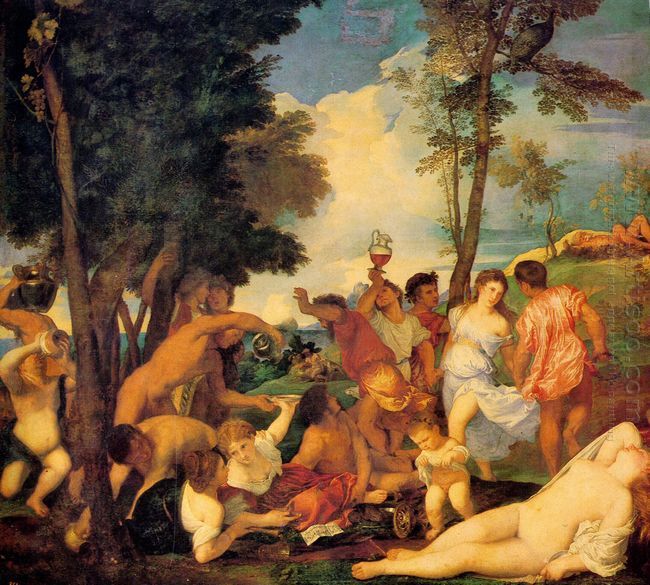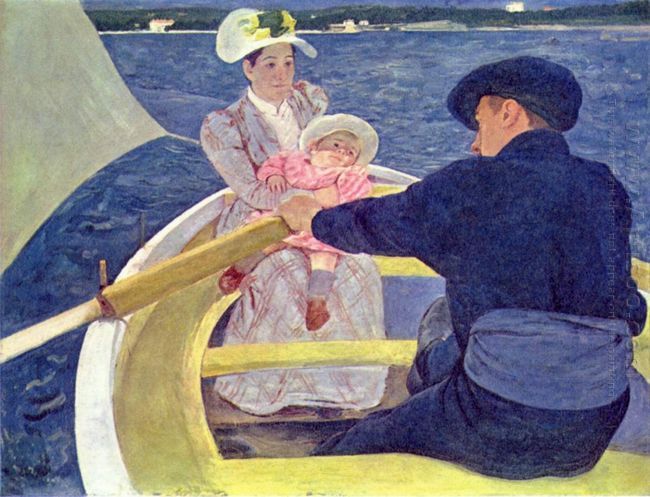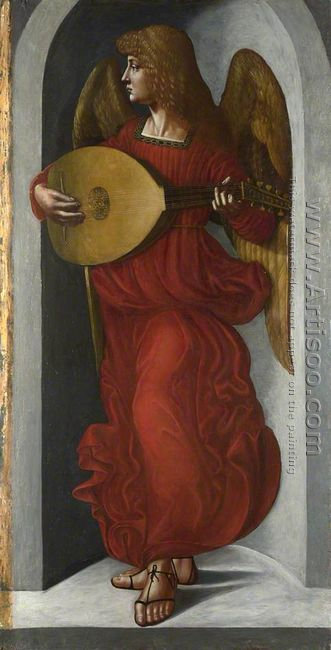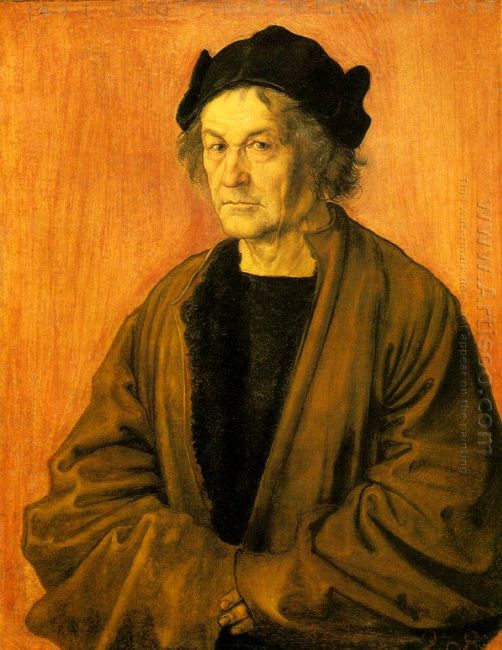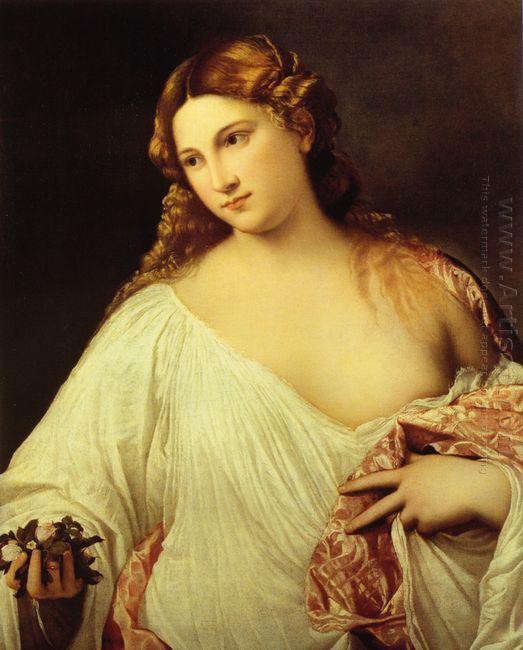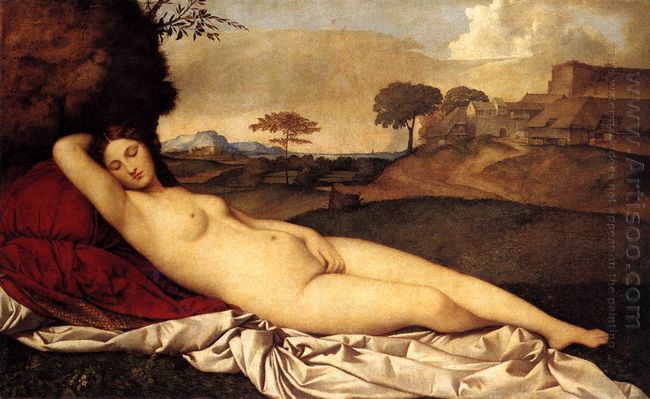What Bacchanal mainly depicted was in the Aegean Base Carat Islands, in an island called Andros, residents were cheering to their hearts, making good cheer, talking about love and dancing to celebrate the bacchanal scene. In the painting, the cheerful residents had different forms: in the right side, two women were lying down and whispering, one's smile was very weird and another surprisingly opened her big eyes and raised her glass to pick the wine that a naked man gave her; the toddler child next to her also hung his head and staggered the step; a woman dressed in white with flying hair and red face behind the painting was dragging a man with blurred eyes and whisper. Under the flying skirt, the naked leg made her more charming; in the distant hills, a white-bearded old man was nakedly lying in the sun and stretching legs, which was very comfortable.
The most notable was the woman lying down at the bottom right of the painting. A beautiful bare naked woman showed her head to the rear, her arms behind the head and randomly stretched her upper body and legs. The blue sky and white clouds in the background made the entire sky stretched vast and far-reaching, increasing the layers of scene and making the depth of the whole painting strengthened. In the description of scenery, Titian compared the rich use of warm and cold colors and showed the characteristics of a quality suggestive of poetry or painting. In this painting, Titian used bold, rich, and colorful colors. Such a lively rhythm and tone most incisively reflected the carnival crowd passion and lively atmosphere. The figures in the painting were active with strong muscle. The complete composition reflected the influence of classicism, but did not regard it as all the essence of painting. At this moment, the human nature broke all the restraints and showed the fitness and vigor of human, unfolded in the audience's eyes. Holiness did not simply praise the religion, here, it was the embodiment of human freedom. In other words, Bacchanal could be said to be a starkly pagan painting. The carnival images in the painting were beyond the daily life scale, and the artist made idealized processing to push a vagrant rebellious spirit to the peak.

